Interpersonal Skills and Influence
Course Overview

Communication is the foundation of all management and employee development. When communication skills are coupled with self-motivation, self-awareness and emotional intelligence in a comprehensive training program, the result is a solid base of knowledge to help improve or enhance performance on the job.
The Interpersonal skills and influence course is focused on providing communication skills training designed to help delegates to communicate effectively, appropriately and clearly in all situations in order to enhance the internal communication culture. It is designed to achieve the business requirements, whereas the integrated EI communication competencies modules gives an opportunity for the delegates to understand the importance of communication in their personal life and professional aspiration.
During the business communication skills training program delegates will learn to understand how they communicate, use effective business communication strategies and adjust to meet the business needs. This communication skills program will help them improve the internal and external communication.
Nevertheless, the art of getting the message across effectively is a vital part succeeding in the business. Whether starting a dialogue with someone else, or sending a written message, this communication skills training program will help your staff to improve their communication abilities through effective communication techniques. From understanding the body language to writing a reports and proposals, all the key aspect of business communication is clearly mentioned and explained during this communication training program.
Goal of Course:
The Interpersonal Skills and Influence program is meant to be applied in the practical life post the completion of the classroom training and will allow the delegates to apply the knowledge back on the job.
Duration:
2 days
Language:
English
Training Objectives
- Identify Personality Type & communication preferences
- Identify the different communication platforms
- Learn to recognize other people’s Personality Types & communication preferences
- Adjusting one’s own communication approach based on need and situations
- Identify barriers to effective communication and how to overcome them
- Effectively utilize tone
- Develop nonverbal & preverbal communication skills
- Learn to use body language appropriately
- Learn to listen actively & effectively
- Use appreciative inquiry as a communication tool
- Learn to establish common ground with others
- Use “I” messages
- Learn to adeptly converse and network with others
Module Outlines
Module 1: Intro to Effective Communication
- Pre-Assessment: Your Communication Skills
- Exercise: What Is Communication?
- Communication: A Two-Way Process
- What Hinders Clear Communication?
- Communication Skills and System Thinking in EI Context
- Identify Personality Type & communication preferences
- Adjusting one’s own communication approach based on need and situations
- Identify barriers to effective communication and how to overcome them
- Effectively utilize tone
- Develop nonverbal & preverbal communication skills
Module 2: Communication as Means of influencing
- John Davies-Star Performing Module
- Application: Communication Techniques
- Learn to establish common ground with others
- Use “I” messages
- Learn to adeptly converse and network with others
- State ideas clearly.
- Gain insight into asking open questions
- Use appreciative inquiry as a communication tool
Module 3: Communication Tools and Self Awareness
- Select the most appropriate and effective tools for communicating.
- Learn to use body language appropriately
- Learn to listen actively & effectively
- Determine the purpose of oral discourse.
- Accept responsibility for personal communication behavior.
- Structuring a message for effectiveness within introductions, main points, useful transitions, and conclusions
- Receiver Communication Techniques
Module 4: Corporate Communication
- Accomplish the organizational communication goals.
- Communication pillars and its effect on achieving business objectives
- Employ language appropriate to the designated audience.
- Recognize the needs and concerns of the business diversities and mindsets.
- Recognize and explain the consequences of ethnocentrism, stereotypes, prejudice and bias.
- Manage conflict.
- How to communicate and interpret objectives and KPIs
- How to address achievements, concerns, issues, and challenges
- How to present a business case
- How to create interest for the subject
- How to understand and interpret decisions and directions
Module 5: How You Say it
- Demonstrate nonverbal behavior that supports the verbal message.
- Demonstrate appropriate interpersonal skills for various contexts.
- Display self-awareness as a communicator
- Recognize when another does not understand the message.
- Identify and manage misunderstandings
- Recognize when it is appropriate to speak
Module 6: EI Integrated Module
- Clarity of communicating (Connecting the Dots for a Better Future)
- The effect of frequent communication
- Feel and convey empathy towards others.
Module 7: Communication as Means to Enhance Work Culture
- The importance of communicating freely, safely and openly within the business
- The importance of creating a communication skills platform
- Barriers of communication internally and externally and their effect on the business
- Miscommunications and its direct effect on performance and ROI
Module 8: Using Feedback as Communication Tool
- Johari’s Window – A Source Of Feedback
- The SSBIR of giving feedback Module (EI Module Base)
- Feedback as Tool of explanation (EI Module)
- Assumption Ladder and the Mental Model (EI Module)
- How to communicate with managers and colleagues
- Post-Test: Communication And Listening Skills
- Action Plan
Customized Learning
Leap To Success is offering a variety of learning options to meet current realities and can be adapted to suit your business needs. These options include variants of online, blended and on-site course formats.
Face To Face Learning
Enabling you to have a face to face interactive and engaging learning experiences led by renowned industry experts and thought leaders with extensive practical experience who will employ a variety of interactive learning techniques, including short high-impact videos, case studies, assessments, role plays, in addition to on-going support.
Virtual Learning Labs
Interactive online learning held in real-time using Zoom and are led by international subject matter experts who incorporate case studies, breakout rooms, guided practice, simulations and discussions to maximise your learning experience.
General Methodology
Similar to any L2S training program, this program offers an interactive learning experience in which will allow the delegates to reflect on their learning through an informative, indulging, and fun classroom experience. The design of the training session focuses on the following attributes.
Concrete Experience: The delegates will learn by doing
Reflective Observation: Reflecting on the newly experienced skill-set
Abstract Conceptualization: Developing deeper understanding to the learned concepts
Active Experimentation: Providing the delegates with realistic tools that can be tested in the real life
Specific Methodology
To effectively execute this program and to ensure that the end result is being achieved L2S specific training methodology in communication skills program is as explained in the below stages:
Stage 1: Designing the Training Event
During this stage L2S will be assessing the learning needs from the determined objectives. Simultaneously consider practicality. In addition L2S will consider the group’s learning style in order to identify which style of learning is most suitable. During this stage L2S as well will capture a real problematic incidents reflecting on the real work environment.
Stage 2: During the training
The course design is based on interactive facilitation, training games, training videos, role-plays, group discussions, group brainstorming sessions. Moreover, a self-assessment exercise to evaluate how good the delegates are in communication will be distributed at the start of the training program and as the delegates begin to communicate more effectively this training program will help you to consolidate and build on your new skills through the post assessment. This is achieved by 3 levels approach (Initial Assessment or Pre Assessment, Formative Assessment) through validating learning and Summative Assessment by the end of the training program
This approach will help the delegates to better understand the communication process as well as identify their own barriers that get in the way of having clear communications. We have included an applications to help you convey messages clearly.
The pre-test has been designed to focus on and to isolate specific learning objectives for each participant. The post-test summarizes and verifies learning in order to assist participants in preparing an action plan. An action plan form has also been included and is another tool meant to facilitate improvement or enhance a particular skill or set of skills.
Stage 3: Post the Training
Post the training program delegates will be given an action plan along with a worksheet that includes the key learning points. Also L2S will design a Leader’s Tool Kit (LTK) for this particular module. The LTK helps the direct managers to evaluate the key learning points discussed during the training and allows the leader to monitor the progress of his/her employees post the training course.
Evaluation: One month post completing the training program, all the nominated delegates will receive an online self-assessment invitation. This self-assessment will allow the delegate to recall and retain the knowledge and the skills learned during the training event. All the answers will be audited through our communication consultant and will the consultant will reply at each question on the self-assessment.
Note: The Self-Assessment will include the following:
- Communication Case studies
- Situational judgment
- EI Communication Competency Matrix
Activities Brief
The Frame: (what is communication?)
This is an experiential game allowing the participants to interact together and in groups in order to achieve a full understanding of communication skills. Once achieving this game participants will be able to understand what is individual communication, interdepartmental communication and most importantly how communication is interpreted. The duration of this game is 45 Minutes and will be introduced in module # 1
Sinking Ship: (what is communication?)
The sinking ship is highly interactive game that allows the group to experience value based communication. Once completing this activity delegates will be able to know that successful communication needs objectivity. Duration 30 min. Introduced in Module #4
Nuclear War: who should survive?
This activity will help delegates to understand the importance of influencing as means of effective communication. Very interactive game. Duration 40 minutes. Introduced in Module # 2
My Fear
To help participants raise their fears or concerns around issues without feeling pressurized or negative. Duration 20 minutes. Introduced in module # 5
Role-plays:
The delegates will be introduced to a series of simulations and role plays all related to communication. The role plays will take place at the last hour of every day and will be use to validate learning outcomes. Total time for role plays is 1 hour.
Assessments
On top of the initial assessment and the summative assessment, the delegates will be able to examine the following self-assessments:
- Social GRID communication style questionnaire
- Responsive behavior questionnaire
- EI Star Performing Module
Mission Improbable
To encourage co-operation the Brief states that it is the two teams combined score that counts. But will each team embrace the fact that they are not competing with each other (Frequently, they don’t and yet it is clear that supportive communication between the two camps is essential in order to gain the maximum score possible!).
In this updated version of this very popular activity there are extra materials making it possible to have a second pair of teams running in parallel to the first so four teams in all. One pair communicates using the intercoms and the other pair, as a comparison, uses written notes and face-to-face meetings
Sign Up For the Course
